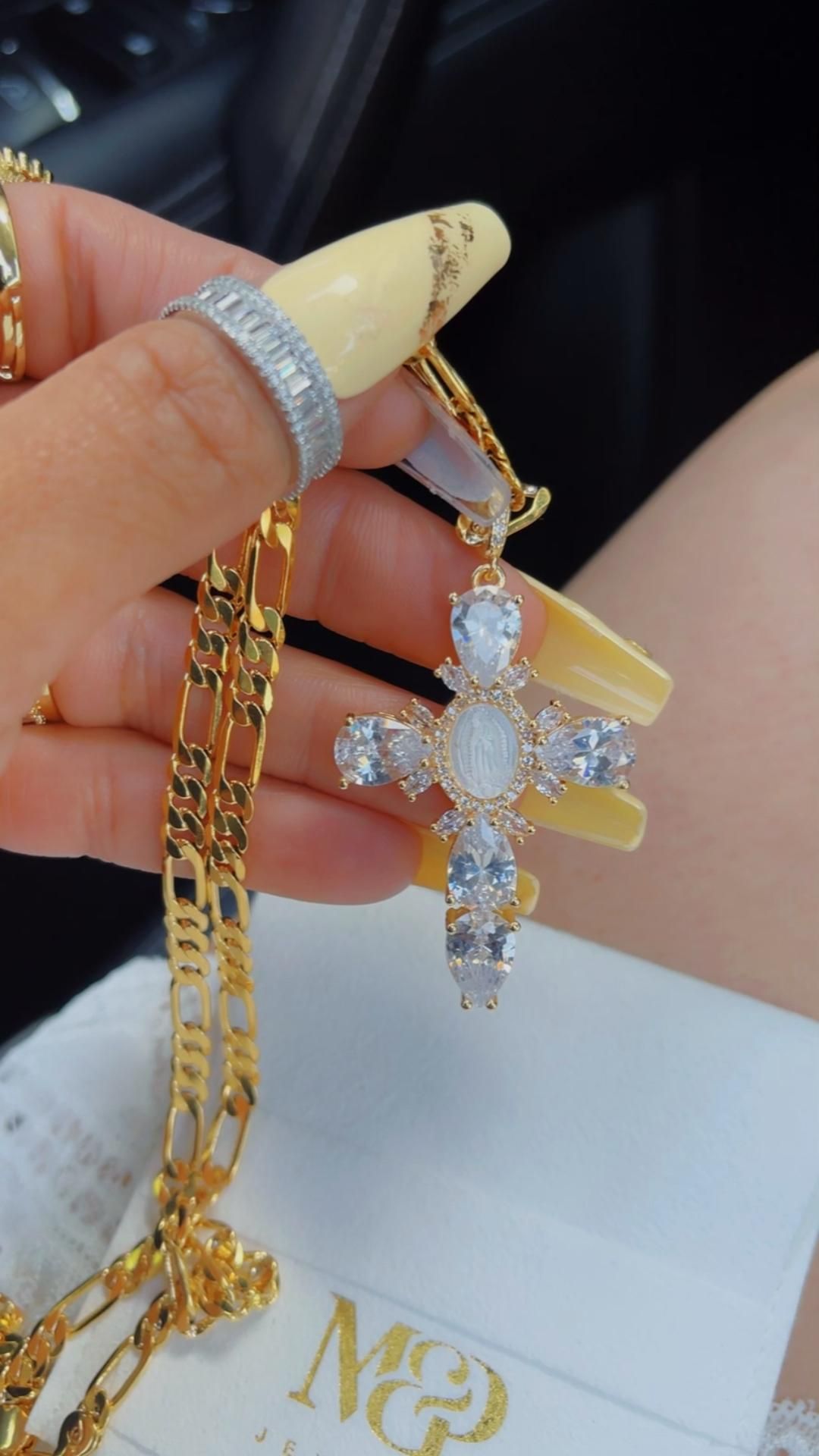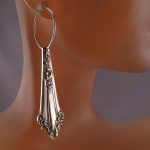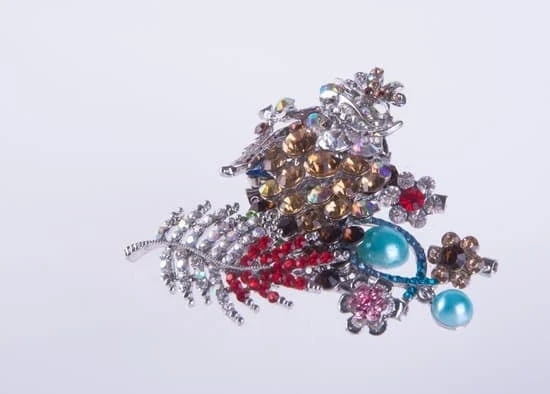The history of steel jewelry traces back to ancient civilizations, where the beauty and durability of steel were recognized and celebrated. In this article, we will delve into the rich and fascinating history of steel jewelry, from its early origins to its modern innovations and designs.
Steel jewelry has a long and storied past, with its roots reaching back to ancient civilizations such as Egypt and Mesopotamia. These early societies valued steel for its strength and resilience, using it to create intricate and striking pieces of jewelry that still capture our imagination today.
As we explore the evolution of steel jewelry, we will take a closer look at how it experienced a renaissance during the Industrial Revolution in Europe, as well as its prominent place in pop culture, from adorning the likes of bikers to rockstars. Furthermore, we will examine the rise of stainless steel as a modern innovation in steel jewelry, leading to new trends and designs that continue to captivate fashion enthusiasts around the world.
Early Origins
Steel jewelry has a rich and fascinating history that can be traced back to ancient civilizations. The early origins of steel jewelry date back to around 1400 BC, with evidence of steel production found in the Middle East and South Asia.
The use of steel in jewelry making can be seen in various adornments such as bracelets, rings, and amulets. The craftsmanship and artistry of ancient civilizations in creating steel jewelry reflect their advanced metallurgical skills and the importance they placed on personal adornment.
During the Roman Empire, steel jewelry became even more prominent, with intricate designs and embellishments adorning both men and women. Steel was often combined with other materials such as gold, silver, and gemstones to create elaborate pieces that showcased the wealth and status of the wearer. This period marked a significant advancement in the techniques used to work with steel, leading to the development of more sophisticated designs and styles.
In ancient China, steel jewelry was also highly prized and symbolized wealth, power, and protection. It was believed that wearing steel jewelry could ward off evil spirits and bring good fortune to the wearer. The meticulous craftsmanship and attention to detail in Chinese steel jewelry reflected the cultural significance placed on personal adornment.
The use of symbolism and meaningful motifs in these ancient pieces highlights the deep-rooted tradition of steel jewelry in various ancient civilizations. Today, we continue to draw inspiration from these early origins as we explore modern innovations in steel jewelry design.
Renaissance and Industrial Revolution
During the Renaissance and Industrial Revolution, steel jewelry experienced a significant evolution in Europe. The advancements in metallurgy and technology during this time period allowed for the production of more intricate and ornate steel jewelry pieces.
1. Artisan Craftsmanship: During the Renaissance, skilled artisans began to experiment with steel as a material for creating jewelry. Intricate designs were etched onto steel pendants, earrings, and rings, showcasing the craftsmanship and attention to detail of the artisans.
2. Industrialization: With the onset of the Industrial Revolution, the mass production of steel became possible, making steel jewelry more accessible to a wider demographic. This led to an increase in the popularity of steel jewelry among both the upper and middle classes in Europe.
3. Influence of Fashion: The changing fashion trends during this time also had a significant impact on the evolution of steel jewelry in Europe. As clothing styles became more elaborate and ornate, there was a corresponding demand for equally stunning jewelry pieces. Steel jewelry became a popular choice due to its affordability and versatility.
4. Symbolism: Steel jewelry during the Renaissance and Industrial Revolution often carried symbolic meanings. It was not uncommon for individuals to wear steel jewelry as a symbol of strength, resilience, or even social status. These symbolic associations further contributed to the popularity and significance of steel jewelry during this time in European history.
Overall, the Renaissance and Industrial Revolution marked a pivotal point in the history of steel jewelry in Europe, as it transitioned from being a specialized craft to a widely embraced fashion accessory with both cultural and symbolic significance.
Steel Jewelry in Pop Culture
Steel jewelry has been an integral part of pop culture, often associated with the rebellious and edgy aesthetics of bikers and rockstars. From skull rings to chain necklaces, steel jewelry has made a bold statement in the fashion world, transcending its utilitarian origins to become a symbol of individuality and nonconformity.
Iconic Rockstars and Steel Jewelry
Throughout history, rockstars have embraced steel jewelry as a means of self-expression and rebellion. Iconic figures such as Keith Richards and Steven Tyler have been known for their signature steel accessories, adding a gritty charm to their stage persona. The ruggedness and durability of steel perfectly encapsulates the raw energy and independence that rock music represents.
Biker Culture and Steel Accessories
Similarly, steel jewelry has long been synonymous with biker culture, reflecting the toughness and resilience of motorcycle enthusiasts. From intricate steel chain bracelets to bold statement pendants, these pieces not only serve as fashion statements but also carry symbolic meanings within the biker community, signifying brotherhood and camaraderie.
From Subculture to Mainstream
What started as a subcultural phenomenon has now permeated mainstream fashion, with designers incorporating steel jewelry into high-end collections. This shift reflects the enduring appeal of steel jewelry’s rugged allure while also showcasing its versatility in adapting to different fashion sensibilities. The history of steel jewelry in pop culture has undoubtedly played a significant role in shaping its contemporary identity as a symbol of rebellion, strength, and individualism.
The Rise of Stainless Steel
In recent years, stainless steel has gained immense popularity in the fashion industry, with many designers incorporating it into their collections. Its shimmering silver color and ability to resist tarnishing make it an attractive alternative to traditional precious metals such as gold and silver. This modern innovation in steel jewelry has made it accessible to a wider audience, allowing people to enjoy stylish and trendy pieces without breaking the bank.
In addition to its aesthetic appeal, stainless steel jewelry is also known for its durability and resistance to corrosion. This makes it an ideal choice for everyday wear, as it can withstand the rigors of daily activities without losing its shine or luster. Furthermore, stainless steel is hypoallergenic, making it a great option for those with sensitive skin. These qualities have contributed to the growing popularity of stainless steel jewelry in the market.
Stainless steel’s modern innovations have not only changed the way we perceive jewelry but have also opened up new avenues for creativity and design. Jewelry makers are now able to experiment with different finishes and textures on stainless steel pieces, allowing them to create unique and eye-catching designs. As such, it comes as no surprise that this metal has carved out a permanent place in the world of fashion and accessories.
| Aspect | Description |
|---|---|
| Durability | Stainless steel is known for its durability and resistance to corrosion. |
| Affordability | Stainless steel jewelry is affordable compared to traditional precious metals. |
| Versatility | The metal’s versatility allows for experimentation with different finishes and textures. |
Steel Jewelry in Fashion
Modern Aesthetics
As the demand for steel jewelry continues to grow, designers are constantly innovating and creating new trends and designs to appeal to a wide range of consumers. Modern aesthetics in steel jewelry often focus on sleek, minimalistic designs that exude elegance and sophistication. From geometric shapes to intricate patterns, steel jewelry has evolved to cater to the tastes of fashion-forward individuals who appreciate both style and durability.
Customization and Personalization
One of the latest trends in steel jewelry is the emphasis on customization and personalization. Consumers now have the option to personalize their steel jewelry pieces with initials, meaningful dates, or even custom engravings. This trend has allowed for a deeper connection between individuals and their jewelry, making each piece more unique and sentimental. Customized steel jewelry has become a popular choice for those looking to express their individuality through fashion.
Mixing Metals
Another prominent trend in steel jewelry is the mixing of metals. Designers are incorporating stainless steel with other materials such as gold, silver, or gemstones to create striking pieces that combine the industrial-chic aesthetic of steel with the luxurious appeal of traditional precious metals. This trend allows for endless possibilities in design, offering a diverse selection of styles that can complement any fashion ensemble.
The history of steel jewelry has been marked by constant innovation and adaptation to changing trends in fashion. As we look towards the future, it is likely that the industry will continue to evolve, embracing sustainability practices while staying true to its roots in durability and timeless design.
The Symbolism of Steel Jewelry
Steel jewelry has a long and rich history that dates back to ancient civilizations. The symbolism of steel jewelry holds great meaning and significance across different cultures and time periods. Throughout history, steel has been revered for its strength, resilience, and timeless beauty, making it the perfect material for creating meaningful jewelry.
In ancient times, steel jewelry was worn as a symbol of power, strength, and protection. It was often crafted into intricate designs featuring symbols and motifs that held cultural and spiritual significance. For example, in Celtic culture, steel jewelry was adorned with symbols such as the triquetra or Triskelion, representing unity, eternity, and the cyclical nature of life.
During the Renaissance and Industrial Revolution in Europe, steel jewelry became more accessible to people of all social classes. This led to an explosion of creativity and innovation in jewelry design. Steel was often combined with precious metals and gemstones to create elaborate pieces that were worn as status symbols or expressions of personal style.
In modern times, the symbolism of steel jewelry has evolved to represent resilience, durability, and longevity. Stainless steel in particular has become popular for its hypoallergenic properties and affordability. Additionally, the rise of sustainable and ethical practices in the jewelry industry has led to a renewed appreciation for steel as a eco-friendly alternative to traditional precious metals.
| History of Steel Jewelry | Significance |
|---|---|
| Ancient civilizations | Symbolizing power, strength, and protection |
| Renaissance and Industrial Revolution | Became more accessible; status symbols or personal style expressions |
| Modern times | Represents resilience, durability; popular use in sustainability movement |
The Future of Steel Jewelry
As we look into the future of steel jewelry, it is important to consider how sustainability and ethical practices will shape the industry. With increasing awareness about environmental impact and ethical sourcing, consumers are becoming more conscious about the products they purchase. This has led to a growing demand for sustainable and ethically produced jewelry, including steel jewelry.
In recent years, there has been a notable shift towards sustainable materials and ethical manufacturing processes in the jewelry industry. Steel, known for its durability and recyclability, has emerged as a popular choice for environmentally conscious consumers. Manufacturers are increasingly using recycled steel to create beautiful and unique pieces of jewelry, reducing the need for new raw materials and minimizing waste.
Furthermore, ethical practices in steel jewelry production have become a focus for many brands. From ensuring fair labor practices to transparent supply chains, companies are making efforts to uphold ethical standards throughout their manufacturing process. As consumer awareness continues to grow, it is likely that sustainability and ethical practices will play an even bigger role in the future of steel jewelry. By embracing these values, the industry can continue to evolve while also preserving the planet and supporting responsible practices.
Frequently Asked Questions
What Is the History of Metal Jewelry?
The history of metal jewelry dates back thousands of years, with evidence of metal adornments found in ancient civilizations like Egypt, Mesopotamia, and China. Metalworking techniques have evolved over time, leading to a wide variety of metal jewelry styles and designs.
How Can You Tell if Jewelry Is Steel?
To determine if jewelry is made of steel, you can use a magnet as steel is magnetic. If the piece attracts the magnet, it may be steel. Another method is to look for any markings or stamps indicating that the jewelry is made from stainless steel.
When Was Stainless Steel Jewelry Invented?
Stainless steel jewelry was first invented in the early 1900s by Harry Brearley, a British metallurgist. He discovered that adding chromium to steel resulted in a corrosion-resistant material, which eventually led to the development of stainless steel for various applications, including jewelry making.

Welcome to my jewelry blog! My name is Sarah and I am the owner of this blog.
I love making jewelry and sharing my creations with others.
So whether you’re someone who loves wearing jewelry yourself or simply enjoys learning about it, be sure to check out my blog for insightful posts on everything related to this exciting topic!





